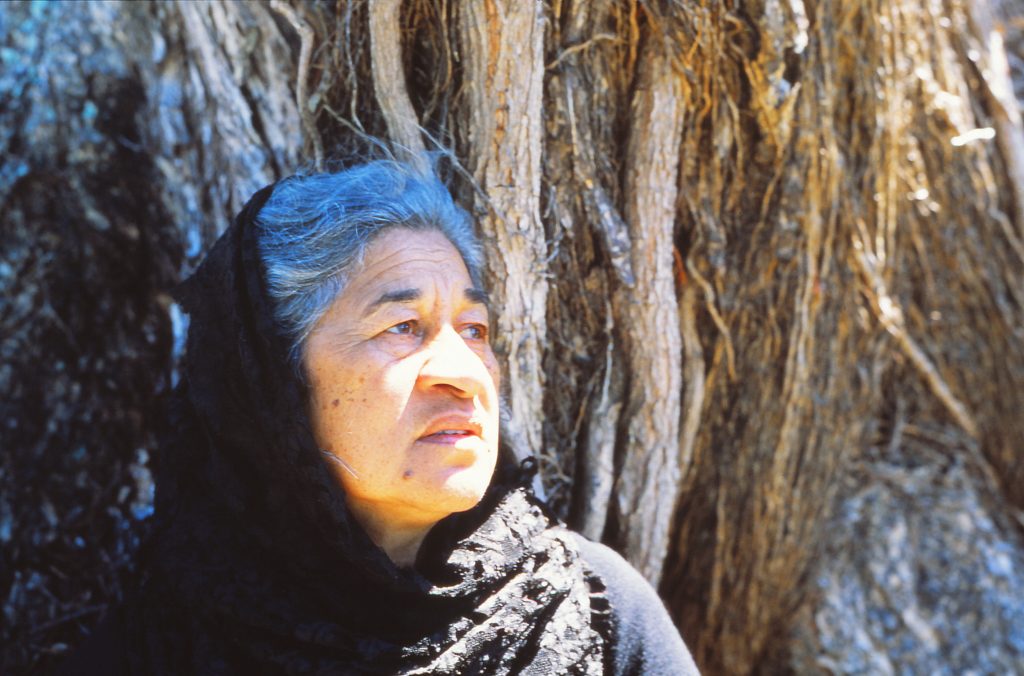Alongside our ongoing Encounter shows—concerned with colonial encounter—we’re screening La Noire de … (1966) by Senegalese director Ousmane Sembène and Mauri (1988) by Aotearoa’s Merata Mita. In their own spheres, both films were powerful first attempts to counter the dominant Western gaze. Alongside A Place Apart, which features painters Christina Pataialii and Ruth Ige, we’re screening The Stuart Hall Project (2013). Assistant Curator Moya Lawson previews the films.

La Noire de … 1966
dir. Ousmane Sembène
Presented in association with Encounter
Sunday 12 July 2020 at 2pm
In a famous interview, the Senegalese director Ousmane Sembène accused the French director Jean Rouch of looking at his African subjects ‘like insects’. Under French colonial rule, it had been illegal for Africans to make films. Released in 1966, six years after Senegal’s independence, Sembène’s La Noire de … was the first feature by an African filmmaker. It still relied heavily on French funding, which was measly and had strings attached. The film was meant to be in Wolof, the main native language, but had to be changed to French to be financed—so the language that runs through the protagonist’s head is that of her coloniser. Sembène likened filmmaking in Senegal to ‘rolling up cigarette butts into one’, but nonetheless achieved starkly beautiful results.
La Noire de … was supposedly inspired by a short newspaper report about the fate of a Senegalese woman working for her French employers in France (‘les blancs’). Sembène gives substance to her abridged, overlooked story. His film explores implicit symbolisms—a wan French couple retreating after independence, remnants of European assimilation, a young fashionable woman hooked by the glamour of France, and a reappearing, foreboding mask. The film’s title (‘The Black of …’) can’t be directly translated; the ‘de’ could imply belonging to a person or a place. The narrative illuminates larger issues of colonialism, racism, and post-independence identity.
La Noire de … speaks to collective experiences with political punch—but it is still Diouana’s story. M’Bissine Therèse Diop delivers an elegant and haunting performance—her mouth unmoving while her steady voice floats above her. She is an individual enmeshed in her own post-colonial situation, and presents the same impulses, faults, and changes of heart as anyone else. Sembène’s activism is in his humanism, creating autonomous, multi-dimensional representations of the black experience—trailblazed by the voice of a young woman. His views are unflinching, confronting the West’s obsessive gaze and sour racism head on, and his messages remain ever relevant.

Mauri 1988
dir. Merata Mita
Presented in association with Encounter
Sunday 19 July 2020 at 2pm
For decades, Mauri stood as the only fiction-feature written and directed by a Māori woman. About the film, Merata Mita said ‘There are things about Mauri that I’ve never revealed or even discussed … I always feel that the moment I open my mouth meaning is lost; if not lost then distorted, perverted even.’
Mita’s films elevated Māori voices at a time when they were few and far between in Aotearoa’s cinema. Her kaupapa cut through an oppressive Pākehā monoculture, and applied a Māori world-view to issues which impacted Māori and non-Māori alike. By the time Mauri was released, Mita had already earned local and international acclaim for two documentaries: Bastion Point: Day 507 (1980), about the eviction of protestors from Bastion Point following a struggle for iwi ownership, and Patu! (1983), which documented the 1981 Springbok Tour protests. On the tail of these seminal films, she made Mauri, her first fictional feature.
Mauri depicts a tight-knit East Coast community at the crossroads of land displacement, urban drift, and cross-cultural tension. It reflects the experiences of many indigenous rural communities at this time. These conditions are observed through the eyes of characters young and old, near and far, enemies and lovers. Portrayed through its own internal codes and, at times, untranslatable events, Mita creates a representation of Māori culture as self-defining and grounded by ancient practices—framed from the opening scene by the tīkanga that surrounds a young Māori mother’s childbirth.
Mauri actively reflects the world beyond the screen. Kara, the kuia, is played by Tuaiwa (Eva) Rickard, who had a pivotal role in the indigenous land-rights movement in the 1970s. Mauri‘s artistic director was Ralph Hōtere, a major contemporary Māori artist.

The Stuart Hall Project 2013
dir. John Akomfrah
Presented in association with A Place Apart
Sunday 26 July 2020 at 2pm
The Stuart Hall Project (2013) is a film essay about Stuart Hall, the Jamaican-born pioneer of cultural studies. It traces his move to Britain in 1951, his role in the New Left movement, and his career as a prominent academic and public intellectual. It observes a changing, globalising world from Hall’s vantage point as an immigrant from an ex-British-colony.
Ghanaian-born director John Akomfrah is known for multi-screen installations that interweave archival and created footage (Hall was also the subject of an earlier three-screen work by Akomfrah). Akomfrah’s practice pivots on ‘the status of the image’, as an entity that can construct and coerce collective memory but can also be used to destabilise it. His films explore history and its changing status in the present.
In his analyses of representation, power, mass migration, and cultural identity, Hall was more interested in defining the questions than finding answers. His work offered open-ended ways of looking at the world and the itinerant identities within it. He commented regularly in the media (a role that has since almost disappeared), and his archived words provide the film’s narration. The film intercuts historical documentary and home-movie footage that interfaces poetically with Hall’s reflections. Akomfrah marks each passing year of Hall’s life with a concurrent work by jazz musician Miles Davis, Hall’s musical alter ego.
Hall passed away in 2014, a year after the film’s release, but his questions still chime with our current moment—especially for artists. With their roots in diaspora, the painters in A Place Apart, Christina Pataialii and Ruth Ige, navigate what it means to represent experience. Hall’s ideas offer one way of looking at their work. Spurred by medium, their practices are personal and speculative, but speak to collective experience.
